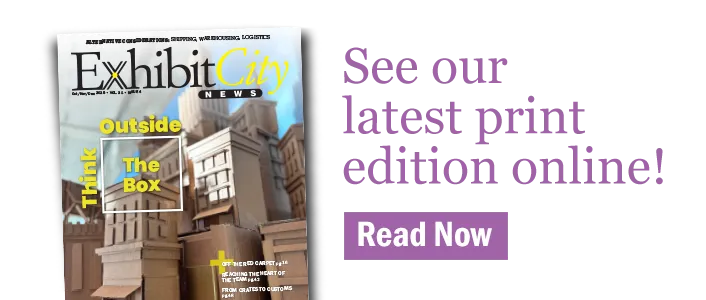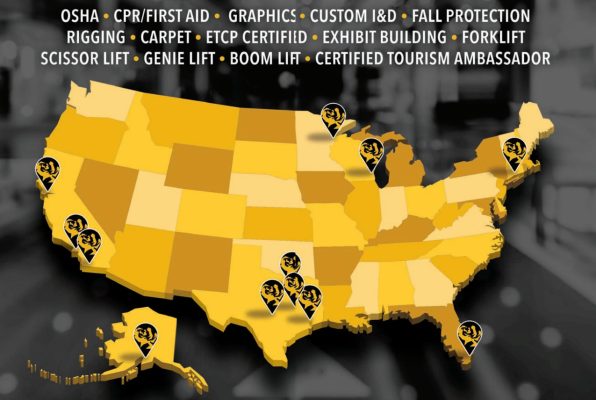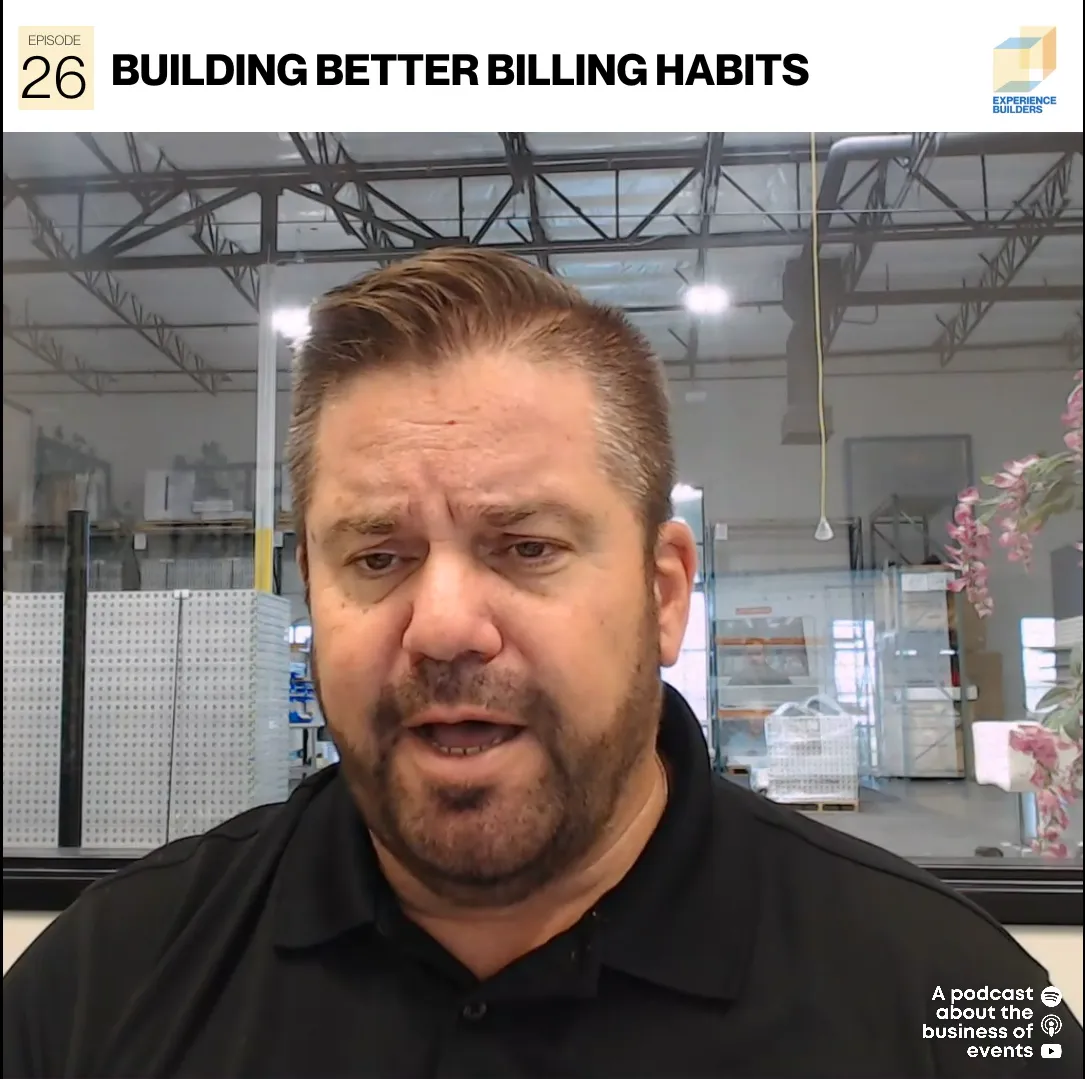 Irrational Costs
Irrational Costs
How would you explain to your boss that moving your company’s booth properties several hundred feet cost more than shipping it from overseas?
That’s the kind of conversation one exhibitor had after shipping a booth from Singapore to Chicago. The voyage across the Pacific Ocean to California, plus the freight from California to Chicago, cost the company $12,000. Unloading that same shipment from the dock to the booth space within the facility, however, cost $17,000.
“Costs like these are impossible to rationalize and don’t make sense to anyone, which makes it hard for exhibitors to validate the cost of participation,” said Jim Wurm, executive director of the Exhibitor Appointed Contractor Association.
Misconceptions About Material Handling Rates
Material handling, also known as “drayage,” describes moving exhibit properties to and from an exhibit space. Somehow, moving the booth from point A to point B accounts for an average of 16% of the exhibitor’s total trade show exhibiting spend.
Rationalizing the material handling rates hinges on misconceptions. The common myth is that the published rates and costs are reflective of what the union worker gets paid. “Exhibitors believe that the high price is because of the unions, but that’s false. They’re just performing the work and the two-man forklift crew that delivers the freight in Chicago is getting an hourly rate,” said Wurm.
Union labor rates are negotiated in collective bargaining agreements every 3-5 years. The increase in rates is transparent, published, and on track with the consumer price index. “Union workers do not receive the published rates, they receive the negotiated rates from the collective bargaining agreements. The negotiated rates are considerably less than the published rates,” said Ken Viscovich, recently retired representative of the United Brotherhood of Carpenters.
Yet the myth stems from complaints filed with the show organizers by exhibitors who received an exorbitant bill for material handling. The show organizer goes back to the general contractor, and the three parties have a meeting. “Usually the person that’s not in the room gets blamed. Who’s not in the room? The union representative,” said Wurm.
The Truth Behind Material Handling Rates
The show organizer hires the GC to handle the physical set-up of the trade show. The GC coordinates the decoration and logistics of the event at the facility and provides services for exhibitors.
In the contractual agreement between the show organizer and GC, the GC reserves exclusive rights to some of the services. Typically, these services include the use of a forklift, sign rigging, electrical installation, and material handling.
When exhibitors sign a contract reserving the booth space, the general contractor’s show kit, which includes the material handling rates, is not published. By signing a contract blindly, exhibitors don’t have a chance to negotiate the rates, which is determined by the GC per agreement with the show organizer.
In addition, the GC might add a number of categories for material handling. Shows can have up to 24 different material handling categories based on the location of shipment arrivals, how the materials are packed, and what deadlines are made or missed. Penalties include missed deadlines, incurring overtime charges, and shipping loose materials not stored in crates.
Downward Spiral
Trade show exhibiting can be a company’s highest single-cost line item in their marketing budget, and exhibit marketers must prove the value of every dollar spent. When a significant chunk of exhibiting costs is eaten up by material handling, budgeting is almost impossible, since the rates aren’t published when the contract to exhibit is signed. And if the rates increase, the exhibitor is certainly not guaranteed more marketing value. For those reasons, exhibitors might reduce the size of booth space or decline to attend the show altogether. And when exhibitors reduce their participation, attendees have less to reason to attend the show, sending everything into a downward spiral.
The National Hardware Show was once one of the five largest trade shows in the United States. From its peak of 1.26 million square feet in 1999, the McCormick Place show shrunk to approximately 460,000 square feet in 2003. Showing research that the increasing cost of exhibiting led to the show’s decline in attendance, the show’s sponsor, the American Hardware Manufacturers Association filed a lawsuit against the show owner, Reed Exhibitions.
In the lawsuit, the AHMA alleged that Reed received kickbacks from the show’s GC. Also, the AHMA claimed Reed received some free goods and services from the GC and allowed the GC to bypass costs to exhibitors in breach of its contract with the AHMA.1
Take Action
Ultimately, exhibitors have to take action for a change to occur. Amanda Helgemoe, owner of Nuvista and board member of the Experiential Designers & Producers Association (EDPA), is dedicated to addressing industry-wide issues and concerns. For several years, Helgemoe has worked with other industry leaders to collect independent research on material handling rates. Now, she uses her findings to teach a CTSM required course at ExhibitorLive! and has spoken at events for HCEA, E2MA, and EDPA. “We need to coach exhibitors to have a voice. That’s the only way the situation will change,” said Helgemoe.
Below are possible actions exhibitors, show organizers, and the industry can take:
- Before signing the booth contract, exhibitors can work with a lawyer to add language entrusting that the space contract will be signed in good faith for fair pricing once the rates are published. If the rates are not fair, the exhibitor and lawyer have the grounds to take further action.
- While the overages are happening, the exhibitor can try to hold the parties responsible and work with the GC and show organizer on-site.
- After the show, progressive associations will have a formal exhibitor advisory committee meeting after the show, during which exhibitors can provide feedback to the show organizers on their experience at the show.
- Show organizers and the GC can offer alternatives to the material handling rates. Some tactics proven to work within the industry include: incorporate material handling into the fee for booth space; let show organizers provide material handling as an in-house service; eliminate overtime and special handling fees and incorporate a blended rate; charge per trip or based on time and materials.
For more information, useful data, and coaching on how to address the issue of material handling, industry folk and exhibitors are encouraged to reach-out to the EDPA, EACA, and Nuvista.
References
- Sachdev, A. (2003, January 03). Trade show feud in court. Trade show feud in court. Retrieved August 15, 2017, from http://articles.chicagotribune.com/2004-01-03/business/0401030151_1_american-hardware-manufacturers-association-ahma-national-hardware-show





















